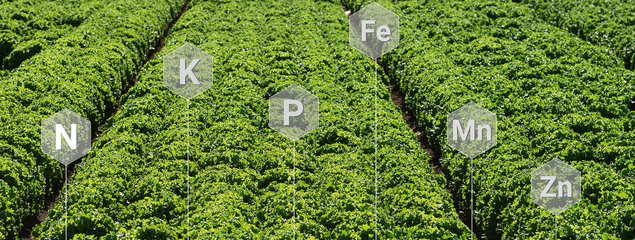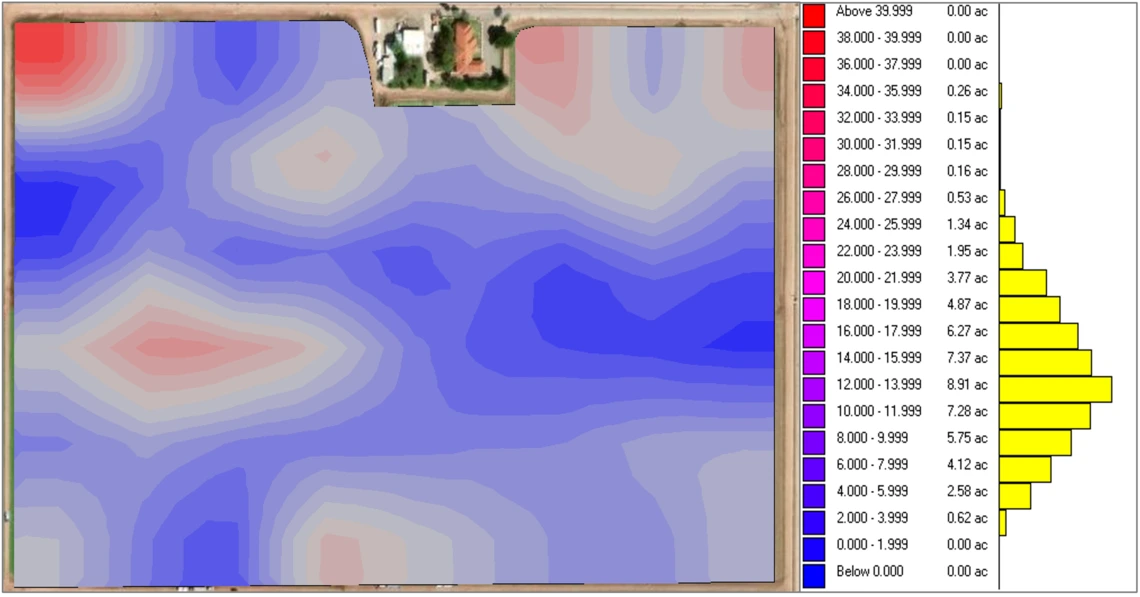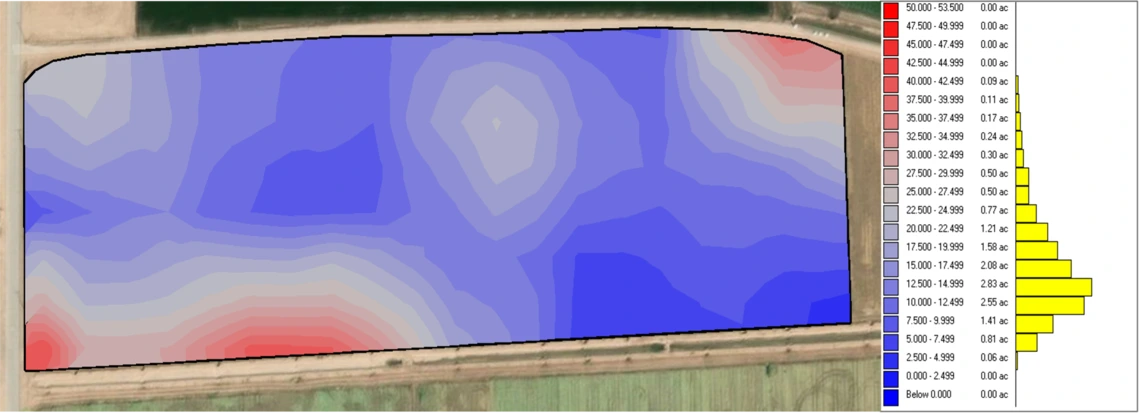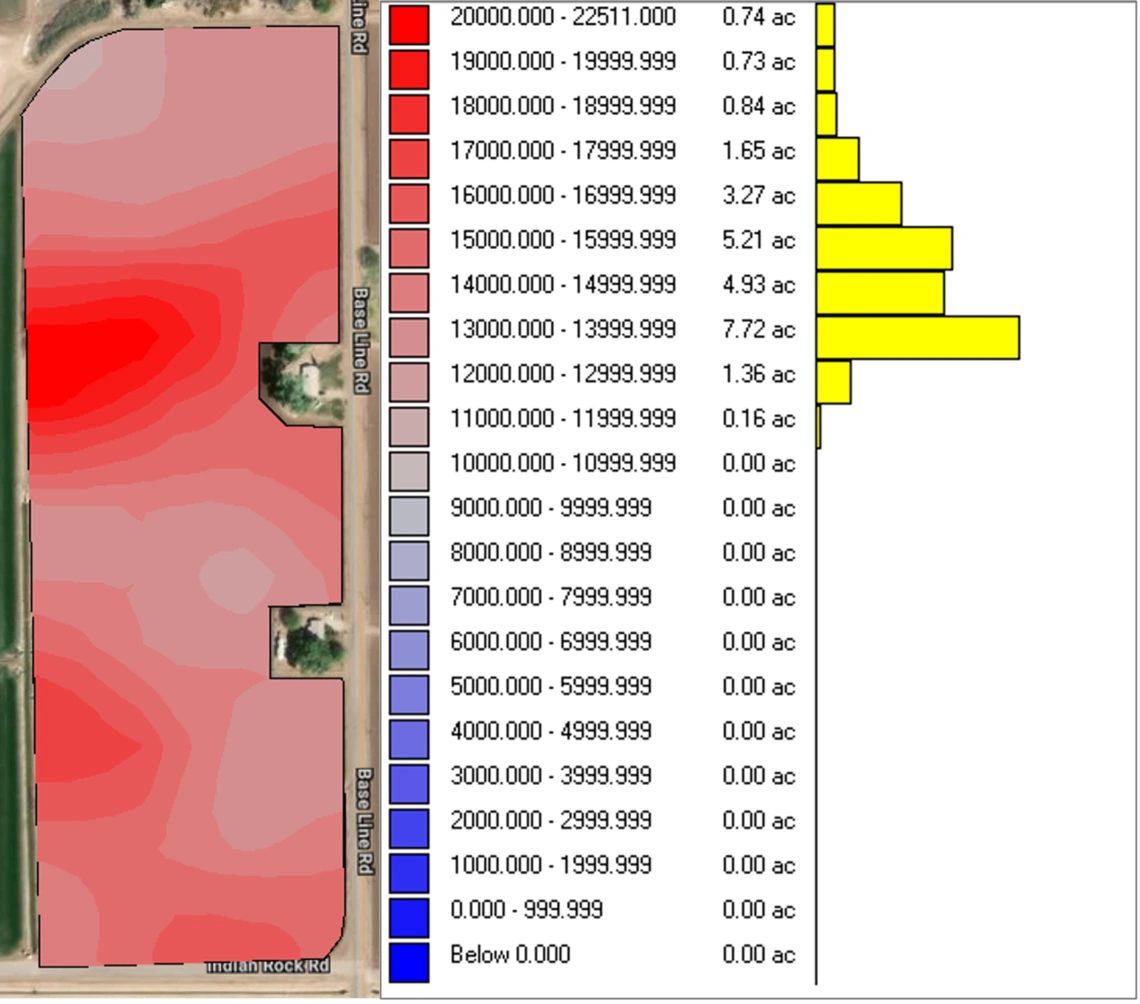
Improve Plant Nutrition
Fertilizer Guidelines for Vegetable Crops in Arizona
Special Sections (4)
Soil and Plant Sampling (4.1)
Sampling is perhaps the most important step in the development of soil or plant-test based fertilizer management recommendations, and it represents a potentially important source of error. Depending on the size of a production unit, a soil sample weighing a pound or less is typically used to represent 40-160 million pounds of soil. Similarly, a few ounces of plant material are collected as a sample of 5-50 tons of plant material in a production field. The implication is that the typical soil and plant sample sizes used in soil and plant testing for fertilizer management applications are generally small. Therefore, strict adherence to established sampling protocols is essential for minimizing sampling errors and the development of sound fertilizer management recommendations. Sampling protocols are described in other publications (93, 94), but a brief description is provided here for convenience.
Soil Sampling
Most of the soils used for vegetable production in the Lower Colorado River Region are alluvial deposits, and thus, there is significant variation in soil texture across a field and with depth. Soil texture has a direct effect on the extent of nitrogen (N) leaching and on the chemical and physical processes that govern phosphorus (P), potassium (K), and micronutrient availability. Figures 4-1-1 and 4-1-2 show typical field-wide variations of soil-test N and P levels (prior to fertilizer application) in vegetable cropping systems of the region.
Fertilizer management guidelines presented on this webpage are based on soil fertility tests conducted on representative composite soil samples composed of a blend of soil sample cores collected from various sampling points distributed across a production field. The individual soil samples consist of one-foot-long cores collected from the upper soil layer of the production fields. Generally, the minimum number of soil cores in a composite sample representing a production unit should be equal to the number of acres in the unit. For instance, if a soil fertility test is to be conducted over a 10-acre field under a vegetable crop, then the field-wide representative composite sample that is to be used for soil analysis should be prepared by blending at least 10 soil sample cores, collected at suitably placed sampling points across the production unit. The sampling points where the cores are collected should be evenly distributed across the field so that each soil sample core approximately represents an equal area of the field. The soil cores collected are then blended and mixed thoroughly in a bucket before submission to a laboratory for chemical analysis or quick approximate tests. Generally, prompt submission and testing of composite soil samples is recommended. This is particularly important when the soil testing involves N analysis because physicochemical transformation of N fertilizers can proceed rapidly.
If the aim of sampling is to diagnose the nature of a localized soil fertility problem observed in areas of the field rather than to develop fertilizer recommendation for the entire production unit, then areas of the field to be evaluated need to be sampled separately from the rest of the field and composite samples prepared for each area.
Plant Sampling
Plant tissue sample protocols are specific to plant age and sampled plant part. Plant sampling protocols for N fertilizer management and for monitoring plant nutritional status are presented in Sections 4.2 and 4.3 of the current webpages, respectively. An example of a field-wide variation in leaf-N concentration of a cauliflower crop is depicted in Figure 4-1-3. As was the case with soil sampling, the composited plant tissue sample should be representative of the variability in plant nutrient levels across the entire production unit. Generally, the number of individual plants sampled should be at least equal to the number of acres in a production unit. Additionally, sampled plants need to be evenly distributed across the field.
If the goal of sampling is to address the nature of a localized plant nutritional problem observed in areas of the field, rather than to determine plant nutrition level across the entire production unit, then areas of the field to be evaluated need to be sampled separately from the rest of the field and composite samples prepared for each area.

Figure 4-1-1
Field-wide variation of soil phosphorus (Olsen P, ppm), prior to planting with lettuce crop

Figure 4-1-2
Field-wide variation of soil test nitrate-N levels in a celery field prior to sidedress N application.

Figure 4-1-3
Field-scale variation in leaf-N content of cauliflower prior to sidedress N application

